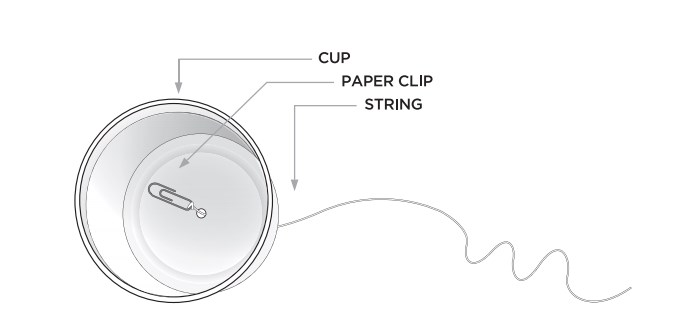In this activity, students use their knowledge of vibrations and sound to mimic the sound of a bullfrog.
The “Cuica” (pronounced “kweeka”) is a Brazilian percussion instrument. Inside the Cuica, a wet cloth is rubbed up and down along a bamboo stick attached to the inside of a calf-skin drum. The rubbing motion produces the sound and the pitch is increased or decreased by changing the pressure on the calf-skin.
Sound is made when something vibrates. When using this bullfrog caller, the friction between the string and your fingers produces the vibration, which is amplified (made bigger) by the plastic container.
There are three ways to change the pitch of a vibrating string.
- Pitch can be adjusted by varying the length of the string. A longer string will result in a lower pitch, while a shorter string will result in a higher pitch.
- Pitch can be adjusted by varying the tension of the string. A string with less tension (looser) will result in a lower pitch, while a string with greater tension (tighter) will result in a higher pitch.
- Pitch can be adjusted by varying the density (thickness/diameter) of the string. A thinner string will result in a higher pitch, while a thicker string will result in a lower pitch, all else being equal (think of guitar strings).



